The Northward Golden Route spans across Saitama, Gunma and Niigata prefectures, and if you enjoy nature, a bit of history and hot springs, then you might want to consider this as one of the interesting ways to explore these prefectures close to Tokyo. Home to the lush green marshlands of Oze; the mysterious night scenes of Kusatsu Onsen; and the historic Tomioka Silk Mill, Gunma is surprisingly accessible from central Tokyo.
The Rugby World Cup is just around the corner and we’re sure you would like to escape from the buzz of Tokyo between matches. In this feature, we introduce a model course for you to enjoy three fun-filled days in Gunma.
Day 1

Since we decided on an early start from Tokyo Station, we bought the JR TOKYO Wide Pass the previous evening at the JR EAST Travel Service Center just outside the Marunouchi North Gate. The JR TOKYO Wide Pass allows non-Japanese passport holders, even those residing in Japan, to travel on JR and selected non-JR trains (including bullet and limited-express trains) in the Kanto Region for three consecutive days. The staff here can help you reserve seats or provide any information you may need in English.

We took the Tanigawa 471 from Tokyo up to Takasaki Station, where we bought an interesting, ceramic-style bento (lunch box) to enjoy along the hiking route in Oze National Park. From Takasaki, we hopped on a local train up to Numata Station, followed by a couple of bus rides that brought us to Hatomachitoge.

Shrouded in mist, just a short walk from the bus stop, we arrived at the starting point of our hiking trail, Hatomachitoge. Here at the local resting area, there is an assortment of basic hiking gear for sale and rent, including raincoats, hiking shoes, and more. We opted to keep our non-essential luggage at the Hatomachi Mountain Villa for just 200 yen per bag and we were ready to set off on our first adventure.

A three-kilometer walk through a beautiful, untamed forest brought us to the Yamanohana Visitor Center. On display are photos of some of the local flora and animal furs among other things and we picked up an English route map of the area for 50 yen. For those traveling light on rations, don't worry, close to the visitor center is a mountain lodge that has a restaurant. By this time, we were quite hungry and decided it was time to enjoy our bento.

We found seats outside the mountain lodge, bought some hot tea, and were quite excited about our eco-friendly bento in a ceramic bowl, Touge-no-Kamameshi. A classic from Gunma, kamameshi is rice cooked in a hearty stock with vegetables, meat or seafood and—similar to a paella—the rice gets slightly burned at the bottom, enhancing the flavor throughout. Our kamameshi included chestnuts, burdock, apricots, bamboo shoots, chicken, green peas, pickled ginger, mushrooms, quail's egg, and rice. If you like these pots you can even use them to cook rice on a stove. After our break, we set off towards Oze Marshland.

You will likely hear "Konnichiwa" a lot when hiking in Japan, so don't forget to practice your greetings! Before we knew it, the Ozegahara Marsh spread out before us, stretching off to the surrounding hills. These marshlands are the natural habitat for an abundance of wildlife, including bears and deer, and a rich variety of plants like skunk cabbages and daylilies. In order to conserve the environment, a network of boardwalks has been constructed and hikers are advised to keep to these at all times. You won't see any rubbish bins either so be prepared to take your rubbish with you!

Regardless of the overcast conditions and inability to catch a glimpse of the two nearby mountains, Shibutsu-san and Hiuchigatake-san, it was an absolutely marvelous experience to be surrounded by the fresh summer foliage. On our way, we saw a few skunk cabbages, azaleas, irises, plenty of round-leaved sundew, and water lilies.

We walked up to Sakasa-Hiuchi, a tranquil spot with a small seating area to enjoy the reflection of Mt. Hiuchi. Once we had our fill of the floating islands and the soothing sounds arising from the marshes, we walked back to Hatomachitoge bus stop and made our way to Oigami Onsen.
- Map for Hatomachitoge
- Official website for Oze National Park

Nestled within Katashina Gorge, Oigami Onsen is a small hot spring town, which is a popular stopover for those visiting Oze. We treated ourselves to a stay at a ryokan (Japanese-style inn) called Ginshotei Awashima. Our tatami-matted room opened up to a gorgeous view of the surrounding forest.

Dinner was a kaiseki meal—a banquet-like feast with an assortment of main and side dishes laid out on low tables in seasonally-themed porcelain and lacquerware. We changed into our yukata (cotton kimono) and entered our own private dining room with an irori, a traditional Japanese sunken hearth.

We were served sanzoku nabe (a hotpot with Joshu pork), grilled river fish, sashimi, assorted dancing mushroom tempura, crab claw and myoga (Japanese ginger heads), assorted steamed shrimp appetizers, grilled salmon, steamed abalone, fish cake, stewed radish, Japanese butterbur, minced meat ball, fried tofu accompanied by pickles, rice, and clear mitsuba (Japanese chervil) soup.

After this feast, we were pleasantly surprised to find our futon (mattresses) laid out in our room. We rested for a while and decided to soothe our aching muscles in the rotenburo, an open-air bath. With paper shoji (screens), stone lanterns, and warm wooden interiors—the way to the baths was an experience that is quintessentially Japanese. No trip to Japan would be complete without a stay at a ryokan.
Day 2
We woke to the pattering of rain on our windows, but weren't too concerned as we had decided to start our day at a nearby sakagura (sake brewery).

We took a local bus from the ryokan that dropped us at Otone Shuzo, a small brewery known for its signature nihonshu, Sadaijin. Nihonshu, commonly known as sake, is an aromatic drink made from rice, water, and koji (mold for fermentation). If you want to understand more about sake and how it's made, then this should be on your list. About 120 years old, the building opens into a tall interior with wooden rafters and rustic furniture.

What struck us most was the gigantic ball hanging at the entrance. Most sakagura will have a sakabayashi displayed outside: made of fresh, green cedar spines to signal the start of sake production for the year; once this ball changes to brown, the sake is said to be ready for consumption. We were given simple explanations in English and miniature models placed in a glass case made it easier to understand the process.

At the end of the tour, you can taste a wide variety of locally brewed sake. We compared a namazake, unpasteurized or unadulterated sake, along with its refined version; nama literally means raw and—similar to young wine—it is fragrant and robust. Not many breweries sell namazake, so we highly recommend buying a bottle.

A few minutes by bus from the sake brewery, we decided to stop for lunch at Okutone Udon Honpo in Nakamichi. With a view of river terraces below and Mt. Akagi beyond, we highly recommend taking the tables by the window. This restaurant is famous for its udon (thick wheat noodles) and sukiyaki nabe (hot pot).

You can savor a specialty of Gunma called Himokawa Udon which is—unlike the usual udon—flat and wide. We chose the kake-udon and tempura set served with a delicate broth called kakejiru made of soy, dashi, and mirin. As thin as one millimeter, the udon noodles are very smooth and are a perfect meal for a hot summer day.

One of the most popular dishes here is the Joshu gyu sukiyaki udon. Gunma is known for delicious pork and beef, and this hot pot comes with the best quality, lean, thinly sliced beef with an assortment of vegetables including Japanese leek, carrots, cabbage, mushrooms, potherb mustard, shirataki (konjac noodles), onsen tamago (soft boiled egg), and udon. Unfortunately, there is no English menu but the Japanese menu has enough pictures for you to choose a dish!
- Map
- Official Website (Japanese)

Fully satisfied with our meal, we boarded the local bus to Jōmō-Kōgen Station, where we opted to use a taxi service called Ekikara Kantakun. A two-hour course that covered these two spots: Minakami Fruits Land Mogitore and Takumi-no-Sato.

Fruit picking is a very popular activity in Japan, so we decided to give it a try. The cost varies according to season, the type of fruit, and your choice of set. At Mogitore, you have the option between a 30-min all-you-can-eat set or a barbeque set (fruit picking, BBQ, gelato), etc. We chose only the fruit-picking option which turned out to be one enormous yet healthy dessert.

Simple instructions were provided in English. Since we visited in early summer, we got to pick plump cherries and delicious blueberries. No takeaways allowed, means one is obliged to eat whatever is picked inside the greenhouse. In autumn, you can enjoy picking grapes and apples! The reception area also has a store that sells snacks and sweets made using local produce. We bought some apple tea and tried the fruit custard before traveling to our second destination for the afternoon.

Our driver dropped us off at Takumi-no-Sato, an arts and crafts village with the Minakami mountains in the background. The main street, called Shukuba-dori, is lined with farmers’ and artisans’ traditional houses. You’ll find about 24 workshops where you can get a hands-on experience of Japanese crafts, including indigo dyeing, paper making, pottery, and creating bamboo products. If you want to explore further, the rental bicycles could be a great option.

We stopped by to look at how soba (buckwheat noodles) are cut. You do not need to reserve to participate in any of the workshops and most take less than an hour from start to finish. Basic instructions are printed in English and are available at most places.
- Map
- Official Website (Japanese)

At the end of our taxi course, we made our way to Numata Station to board the SL Gunma Minakami—a steam locomotive that runs between Takasaki and Minakami stations on particular weekends and national holidays. You can use your JR TOKYO Wide Pass for this special train too, but remember to reserve seats.

This is a unique experience, truly a reminder of the charm and romance of steam trains. In the short, half-hour journey between Numata and Shibukawa, we slowly wound our way through the Tone gorge with sights of Mt. Akagi and upper tributaries of the Tone river.

The rhythm of the rails, the sound of the steam whistle, and the lush green sights blurred by the smoke was something most people only get to read about in novels. We were delighted to experience it firsthand. If you're a train lover, you might want to check the schedule here. From Shibukawa Station, we changed to a local train, got off at Naganoharakusatsuguchi Station and took a bus up to Kusatsu Onsen.

Our final stop for the day was one of the most popular hot spring areas in all of Japan, Kusatsu Onsen. In the heart of this hot spring town is the iconic Yubatake, a hot water field that helps cool down the thermal spring water before being supplied to the various baths in the area. The best time to see this spot is in the evening when the steam rises through an ever-changing series of illuminations.

We had finally checked everything off our list for the day so we took a taxi up to Hotel Village. Our western-style room with a joined washitsu (tatami room) had a wonderful view of the cedar forest. Feeling ravenous, we headed straight for the buffet, which offered a range of Japanese and western dishes. To end the long day, soaking in a mineral-rich bath was hard to beat.
- Map
- Official Website (Japanese)
Day 3
On our last day in Gunma, we took the bus up to Naganoharakusatsuguchi Station and made our way to Takasaki Station.

Our first stop was the Shorinzan Daruma-ji (temple). Daruma are round, good-luck dolls in the shape of Bodhidharma with blank eyes; you make a wish by painting one eye and once the wish is granted you fill in the other. A steep staircase takes you to the top of the hill in front of the Hondo (main hall) with hundreds of various-sized daruma placed outside. Apparently, the founder, Shinetsu, painted pictures of Boddhidharma, and offered it to farmers to ward off evil. Over time, the temple priests taught farmers to make and sell daruma dolls when the harvest was bad. An English pamphlet about the history is available and you should have no problem communicating in simple English.

You can try your hand at painting your own daruma. The black eyebrows represent a crane while the red nose suggests a turtle, together these symbolize longevity. It took us about 20 minutes to create our own daruma; although we stuck to a traditional design, feel free to unleash your creativity.

Other than painting daruma dolls, you can write your wishes on a daruma-shaped ema (votive tablet) and even buy adorable daruma memorabilia. The Daruma-Ichi (daruma market) held all over Japan, in early January, originated here and Takasaki remains the largest manufacturer of daruma dolls.

Our lunch stop was at Cafe Takasaki Jiman on the seventh floor of Takasaki OPA, a shopping mall, close to Takasaki Station. "Jiman" means pride so, knowing this, you can understand that the cafe is proud of the produce from Gunma as much as the dishes served here. The menu has some English and photos.

Takasaki has plenty of pasta restaurants and is known for its pasta dishes. So we tried a vegetarian pasta in tomato sauce and a one-plate set called Takasaki Jiman Plate, which included a salad with mushrooms and tomatoes; miso soup with eggplant, onion, and lettuce; as well as bread-like manju; yogurt; and a soft-boiled egg.

Unlike manju from other parts of Japan that are usually stuffed with sweet bean paste, yaki-manju from Gunma are basically grilled buns that are lightweight and coated with a rich, sweet miso sauce. These were really delicious and no wonder they're considered the soul food of Gunma.
After polishing off some of the local favorites, we still had time before boarding our train back to Tokyo. We decided to visit three more spots: Konnyaku Park, Rakusan-en, and Tomioka Silk Mill. From Takasaki Station, using our JR TOKYO Wide Pass, we took the Joshin Dentetsu Line up to Jōshū-Tomioka Station where we took a bus to Konnyaku Park.

Konnyaku Park's path to international fame was thanks in part to the Netflix reality show, Terrace House. Konnyaku is made by processing water and konjac or devil's tongue potato; most of Japan's konnyaku comes from Gunma. Although it looks and feels unusual, konnyaku is a health food, high in fiber and protein with almost no calories.

We walked around the colorful factory with illustrations of Manan-chan, the mascot, guiding us along. You can learn about the process and trivia related to konnyaku production. But the best part about the whole experience here is enjoying the all-you-can-eat konnyaku buffet that is free for all. Konnyaku is served in every possible manner imaginable from konnyaku noodles to konnyaku curry and deep-fried konnyaku. Our favorites were the ramen noodles and salmon roe. A pamphlet available at the reception provides basic information in English.

After challenging ourselves to eat so much konnyaku, we stopped by at Rakusan-en, the site of a feudal lord's garden—first built in the early Edo period (1603-1868). Serene and silent, this classic Japanese-style garden has been restored beautifully with stone paths and water features. Koshikake-chaya is a pentagon-shaped teahouse, a rarity in Japan, and Ume-no-Chaya offers panoramic views of the surrounding landscape.

We took our shoes off, stepped into the tatami-matted room of Ume-no-Chaya, and enjoyed the cool breeze and the sight of radiant, golden carp in the Konmei pond below. To see locally excavated artifacts, stop by at the Jukyuken tenement on your way out. You can get an English brochure including a map at the ticket counter. From Konnyaku Park, you can take a taxi or walk up to Rakusan-en.
- Map
- Official Website (Japanese)

From Rakusan-en, you can take a taxi or bus to visit the final spot: a UNESCO World Heritage Site and national treasure, Tomioka Silk Mill. Established in 1872 by the Meiji Government, it was Japan's first silk-reeling factory and contributed to the industrialization of silk production, a pivotal moment for the modernization of Japan.

Operations were closed in 1987 and the buildings have since been restored. The red brick buildings with tall windows and ornamental onigawara (roof tiles) are a blend of Japanese and French architecture. A truss structure was used to ensure the 140-meter long buildings housing the silk reeling machines were unobstructed by any interior pillars.

The highlight here was the vast collection of reeling machines on display; we watched a video to understand how these machines work and were amazed at their efficiency. Beyond the unique architectural features, the factory also pioneered the engagement of a female-dominant workforce. At its peak, hundreds of women worked here and were even provided housing in the dormitories adjacent to the factory. An audio guide is available in five languages for 200 yen or just scan the QR code at the entrance, to get free audio guidance on your smartphone.

After learning the history of Japan's first modern silk factory, we walked to Jōshū-Tomioka Station. Using our JR TOKYO Wide Pass, we took the Joshin Dentetsu Line up to Takasaki station and hopped on a bullet train to head back to Tokyo Station.
How about visiting some of these hidden gems that introduce you to some of the historical and cultural aspects of Gunma?
(Prices and information as of June 2019)
This is the second part of a series about traveling along the Northward Golden Route covering Saitama, Niigata, and Gunma prefectures. If you want to see more photos of this amazing trip, do check the photo gallery on the right.
.article p img { width: 23%; margin: 1em auto; display: inline; text-align: center; margin-left: 23%; } img.img-responsive.text-center.xs { max-width: 4em; }

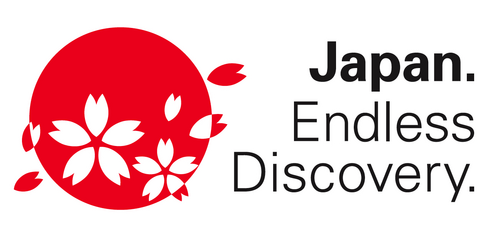
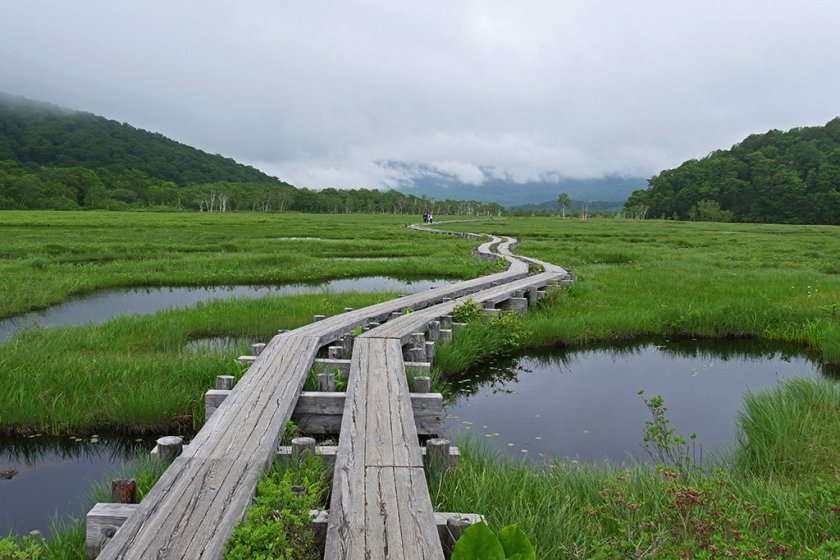


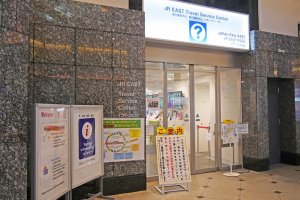
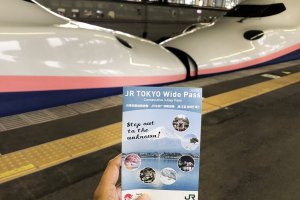
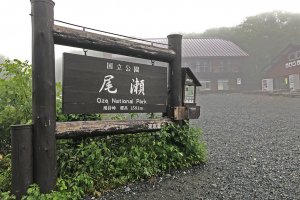
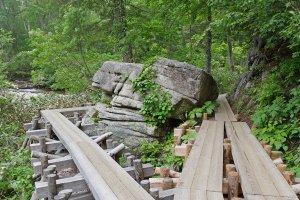


























The Tokyo Wide Pass is available to anybody who holds a foreign passport. The rules say that this includes foreign residents of Japan. Is that so?! It's a fabulous deal to help people learn about the region.